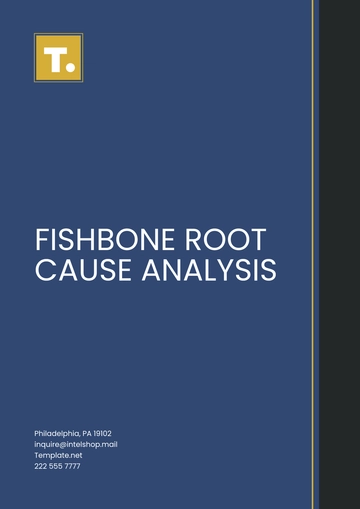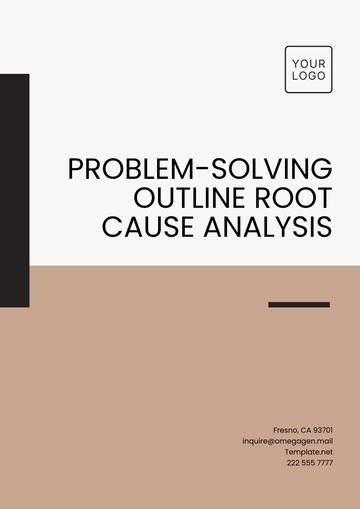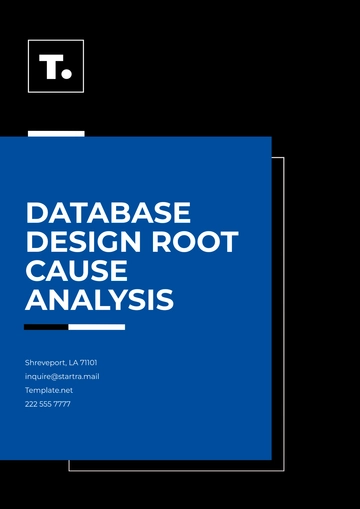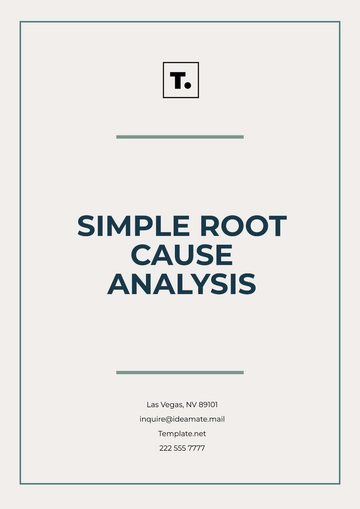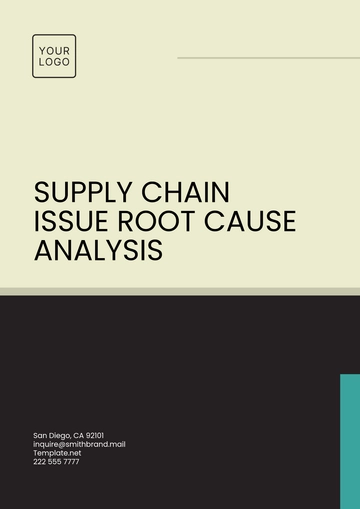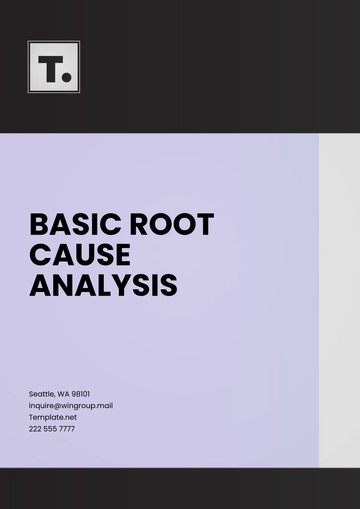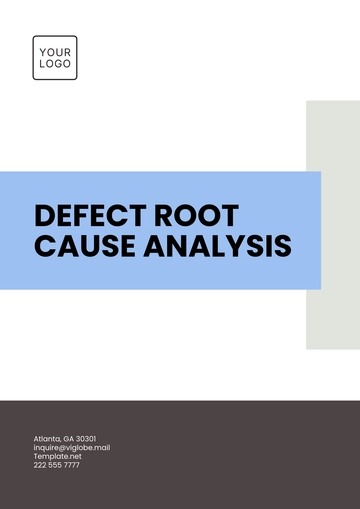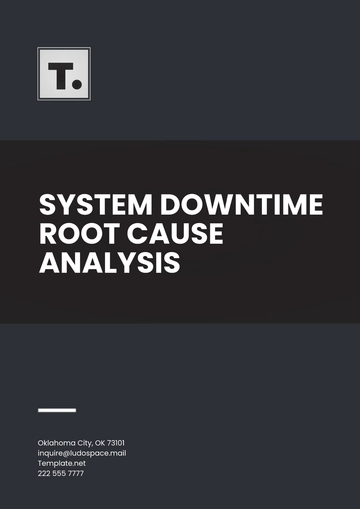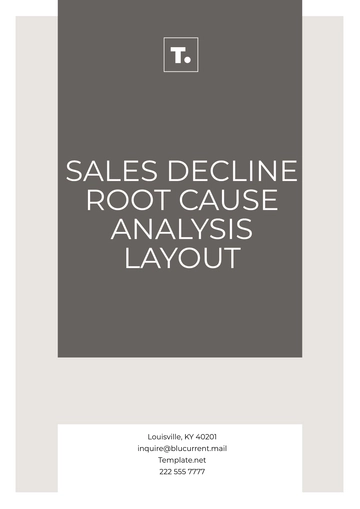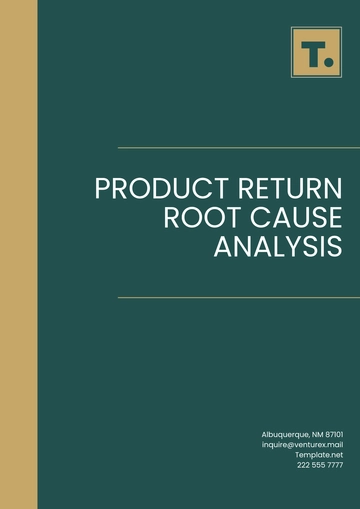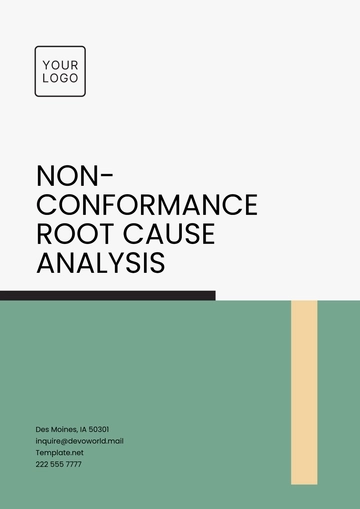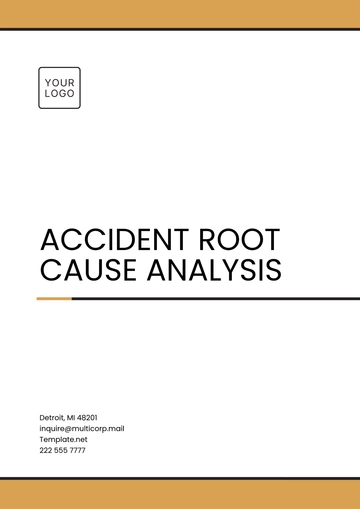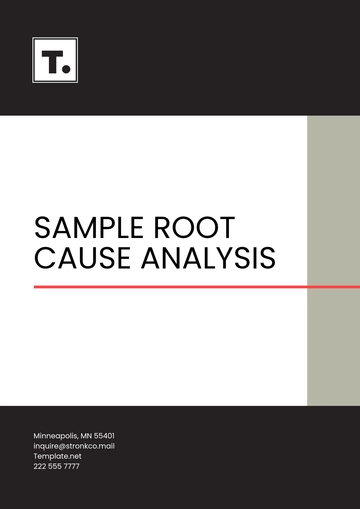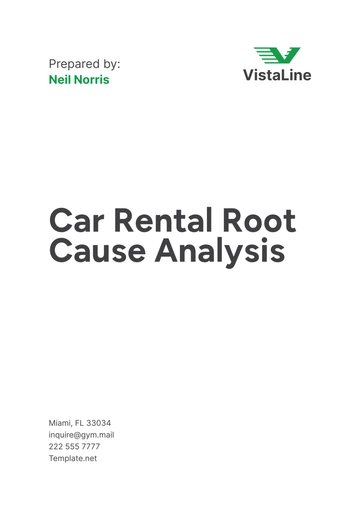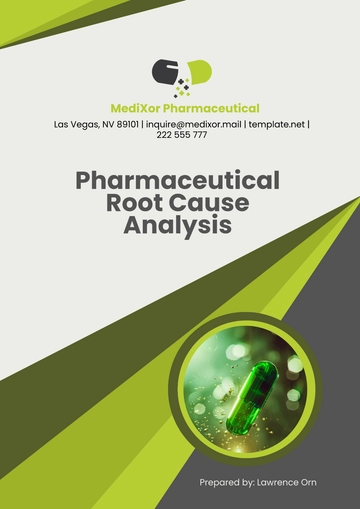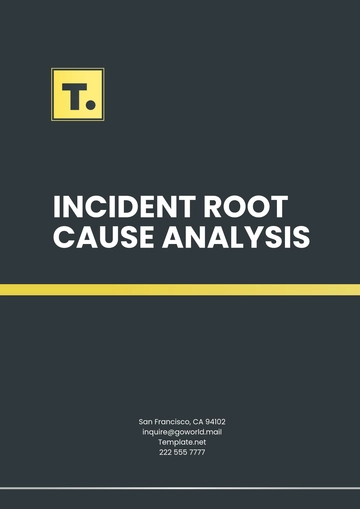Free Sales Analysis of Customer Feedback Channels

A. Executive Summary
The following analysis provides a comprehensive review of the various customer feedback channels employed by [Your Company Name]. This report assesses the effectiveness, customer engagement, and revenue impact of each channel over the third quarter of [20xx].
Key Findings:
Email Campaigns generated the highest customer response rate at 47%.
Social Media Interactions resulted in the greatest lead-to-conversion ratio of 12%.
Customer feedback via the Company Website increased by 35%, influencing product development.
The Customer Service Hotline showed a decrease in usage by 22%, reflecting a shift towards digital communication preferences.
B. Introduction
Background
[Your Company Name], established in [205xx], has been at the forefront of the tech industry, serving a diverse customer base with products and services. Understanding that customer feedback is pivotal to our growth and improvement, we have integrated a variety of channels to collect consumer insights. These channels are not only conduits of communication but also serve as touchpoints to enhance customer relationships and gauge consumer sentiment towards our products and services.
In today’s digital age, feedback is instantaneous and plentiful, coming from various sources such as direct email responses, social media interactions, and more structured approaches like surveys. These feedback mechanisms are instrumental in creating a customer-centric business model that adapts and evolves based on consumer needs and preferences.
Purpose of Analysis
This analysis is conducted with the objective of dissecting the performance of our customer feedback channels, providing a clear picture of customer engagement levels and the impact of feedback on our sales strategy. By evaluating each channel’s effectiveness, we can allocate resources efficiently, prioritize channels that drive sales, and improve those that enhance customer satisfaction and loyalty.
Furthermore, by understanding the sentiments and trends from customer feedback, we can better align our product development with customer expectations, ultimately fostering a stronger brand reputation and increasing market share.
Scope of Analysis
The analysis encapsulates data collected from [Month, Day, Year], to [Month, Day, Year], across various feedback channels. It will detail the type and volume of feedback received, customer engagement metrics, sentiment analysis, and subsequent effects on sales and product development. This time frame was chosen to capture consumer behavior post the release of our latest product line, thereby providing insights into immediate customer reactions and long-term satisfaction.
C. Methodology
Data Collection
To ensure a comprehensive analysis, data was meticulously collected through various means:
CRM Software: Centralized data from email campaigns, customer profiles, and purchase histories.
Web Analytics Tools: Provided data on website interactions, feedback form submissions, and live chat sessions.
Social Media Monitoring Tools: Gathered data on likes, comments, shares, and overall engagement on platforms such as [Your Company Social Media].
Direct Feedback Compilations: Information gathered by customer service representatives from phone calls, emails, and in-person interactions.
The collected data ranges from quantitative statistics such as response rates and lead-to-conversion ratios to qualitative feedback like customer comments and suggestions.
Data Analysis
The data underwent a rigorous analysis process, which included:
Descriptive Statistics: Summarizing data to find the mean, median, and mode of feedback scores and response rates.
Sentiment Analysis: Employing natural language processing to categorize feedback as positive, negative, or neutral, and to determine the overall customer sentiment.
Correlation Analysis: Identifying relationships between different types of feedback and sales figures.
Time Series Analysis: Understanding how feedback and engagement trends evolved over the quarter.
D. Email Campaign Feedback
Performance Metrics
Our email campaign, designed to reach out to our established customer base, yielded the following results:
Metric Value | Industry | Benchmark |
|---|---|---|
Total Emails Sent | 850,000 | N/A |
Open Rate | 62% | 18-25% |
Response Rate | 47% | 2-12% |
Positive Feedback | 68% | N/A |
Negative Feedback | 12% | N/A |
Neutral Feedback | 20% | N/A |
Conversion from Feedback | 5.5% | 1-3% |
The total emails sent refers to the number of unique email addresses the campaign was dispatched to. Our open rate dramatically exceeds industry benchmarks, likely attributable to our robust subject line A/B testing and personalization tactics. The response rate, indicative of the customers who engaged with the content and provided feedback, significantly surpasses typical industry performance. This is a testament to the compelling call-to-action and relevance of content to our subscribers.
Insights
The positive feedback, accounting for 68% of responses, suggests that the majority of customers are satisfied with [Your Company Name]'s offerings and customer service. However, the 12% negative feedback offers an invaluable opportunity for improvement, with most criticisms directed towards the desire for more diversified product features.
Moreover, the conversion rate from feedback, standing at 5.5%, illustrates that nearly 1 in 18 customers who engaged with the email campaign proceeded to make a purchase based on their interaction. This metric not only highlights the efficacy of the email campaign but also signals the potential for revenue growth through optimized email marketing strategies.
E. Social Media Interaction
Performance Metrics
Social media platforms continue to be an essential tool for engaging with customers and gathering their feedback. The metrics below reflect the performance across all [Your Company Social Media] platforms.
Metric Value | Industry | Benchmark |
|---|---|---|
Total Interactions | 1,200,000 | N/A |
Positive Sentiment | 71% | 55-65% |
Negative Sentiment | 15% | 10-20% |
Neutral Sentiment | 14% | N/A |
Lead-to-Conversion Ratio | 12% | 1-3% |
Total interactions encompass likes, comments, shares, and direct messages. Our social media campaigns are particularly effective, with a lead-to-conversion ratio of 12%, which markedly outperforms industry norms. This highlights the success of our targeted content and influencer collaborations.
Insights
The sentiment analysis displays a robust 71% positive sentiment, underlying the success of our social media strategy in creating content that resonates with our audience. The negative sentiment at 15% is aligned with industry standards and primarily pertains to requests for more environmentally sustainable practices in product packaging.
The social media channels not only serve as a medium for transactional interactions but also for building brand loyalty and community, which is indirectly reflected in the conversion rates. Our data suggest that enhanced engagement on these platforms correlates with higher sales volumes, especially during promotional periods.
F. Website Feedback Analysis
Performance Metrics
Our website functions as the digital storefront for [Your Company Name], and feedback collected here is critical for understanding customer experience online. The following table outlines key performance metrics gathered from our website feedback tools:
Metric Value | Industry | Benchmark |
|---|---|---|
Total Feedback Submissions | 65,000 | N/A |
User Session Duration | 5 min 30s | 3 min |
Bounce Rate | 29% | 40-60% |
Positive Feedback | 59% | 50-60% |
Negative Feedback | 21% | 15-25% |
Neutral Feedback | 20% | N/A |
Feedback Conversion Rate | 6% | 2-4% |
The session duration and bounce rate are particularly telling metrics. The average session duration exceeds industry norms, suggesting that users find the content engaging and are taking the time to explore our offerings. The bounce rate, significantly lower than industry standards, indicates that our website is effective in capturing the attention of visitors.
Insights
The high volume of positive feedback correlates with our user-friendly website design and intuitive navigation paths. However, the 21% negative feedback points to areas for improvement, such as the desire for more comprehensive product information and a more streamlined checkout process.
The feedback conversion rate, standing at 6%, indicates that website feedback directly contributes to sales, underscoring the importance of continuous improvement in website user experience. Enhancements based on customer suggestions could further increase this conversion rate.
G. Customer Service Feedback
Performance Metrics
Our customer service team is often the first point of contact for any issues or inquiries. The following data represent the feedback from customers who have interacted with our customer service representatives:
Metric Value | Industry | Benchmark |
|---|---|---|
Total Calls Received | 95,000 | N/A |
Resolution on First Call | 87% | 70-85% |
Follow-up Required | 13% | 15-30% |
Customer Satisfaction Score | 88/100 | 80/100 |
Negative Feedback | 9% | 10-15% |
Positive Feedback | 85% | 70-80% |
Our customer satisfaction score is a composite index based on several factors, including resolution effectiveness, politeness, and information provided.
Insights
The high resolution-on-first-call rate indicates that our customer service team is well-trained and efficient, leading to an overall satisfaction score that outpaces the industry average. The low percentage of follow-up required suggests that most customer issues are resolved promptly, which contributes to a positive customer experience.
H. Survey Feedback Analysis
Performance Metrics
Our periodic surveys serve as a structured mechanism to capture targeted feedback on specific aspects of our product and service offerings. The collected survey data from the past quarter provides the following insights:
Metric Value | Industry | Benchmark |
|---|---|---|
Total Surveys Completed | 120,000 | N/A |
Response Rate | 30% | 10-15% |
Satisfaction Rating (1-10 | 8.5 | 7.5 |
Product Improvement Feedback | 40% | N/A |
Service Improvement Feedback | 22% | N/A |
Repeat Purchase Intent | 75% | 60-70% |
The response rate and satisfaction rating notably surpass the industry averages, indicating strong customer engagement and overall satisfaction with [Your Company Name]'s products and services.
Insights
The surveys reveal that customers are generally satisfied with their experience, rating it at 8.5 out of 10. This high satisfaction score correlates with the intent to make repeat purchases, as reported by 75% of respondents. However, 40% of the feedback pertains to product improvement, with customers suggesting enhancements in features and usability. Additionally, 22% of the feedback focuses on service improvement, mainly concerning the availability of support and speed of service delivery.
Given this feedback, [Your Company Name] should consider deploying a more agile product development process to incorporate customer suggestions rapidly. For services, expanding the customer support team and improving training can address the feedback on service delivery speeds.
I. Conclusion and Recommendations
Summary of Findings
The analysis of customer feedback channels over the past quarter has provided valuable insights into [Your Company Name]'s customer engagement and satisfaction levels. Our email campaigns and social media interactions lead in effectiveness, with high positive sentiment and conversion rates. The website and customer service feedback have also indicated strong performance but come with actionable feedback for further improvement. Survey responses highlight a high level of satisfaction and valuable insights into areas of product and service development.
Strategic Recommendations
Based on our comprehensive analysis, the following strategic recommendations are proposed to optimize our customer feedback channels:
Email Campaigns: Continue the successful tactics of personalization and A/B testing while exploring the integration of more interactive content to increase customer engagement further.
Social Media: Invest in a responsive engagement strategy that includes leveraging user-generated content and real-time customer service.
Website Experience: Implement a continuous improvement process for the website, focusing on the checkout experience and information clarity based on customer feedback.
Customer Service: Invest in advanced training programs for customer service representatives and consider the introduction of AI-based tools to reduce wait times and personalize service.
Surveys: Utilize dynamic and adaptive surveys to delve deeper into specific areas where feedback has indicated the potential for product or service enhancements.
Cross-Channel Analysis: Develop an integrated feedback analysis approach to correlate data across different channels and derive more comprehensive insights into customer behavior and preferences.
Feedback Loop: Establish a robust internal feedback loop to ensure customer suggestions are quickly acted upon, fostering an environment of continuous improvement and customer-centric development.
Implementing these recommendations will not only enhance customer satisfaction but will also contribute to increased loyalty, higher conversion rates, and, ultimately, a stronger market position for [Your Company Name].
- 100% Customizable, free editor
- Access 1 Million+ Templates, photo’s & graphics
- Download or share as a template
- Click and replace photos, graphics, text, backgrounds
- Resize, crop, AI write & more
- Access advanced editor
Utilize the Sales Analysis of Customer Feedback Channels Template from Template.net to evaluate and analyze the various channels through which customer feedback is collected and their impact on sales. This template includes sections that are customizable and editable using an Ai Editor Tool so you can document the different feedback channels such as surveys, social media, emails, and more. Gain valuable insights and make informed decisions with this template today!
